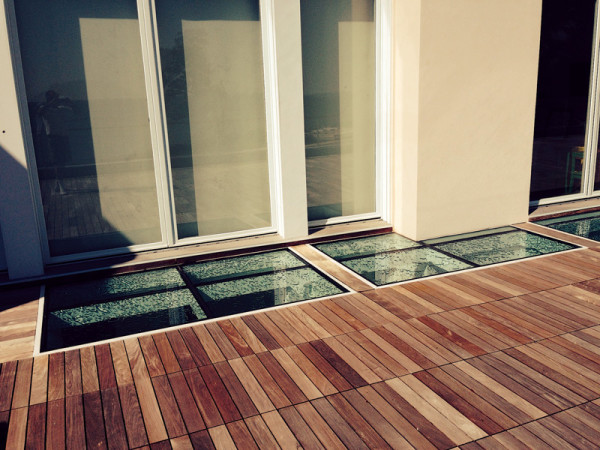
Skylight innovations include retractable mechanisms—and even walkable glazing for roofs that are also decks. (Courtesy: Solar Innovations)
Skylights or, historically, roof lanterns are a time-honored way to bring daylight and ventilation to difficult areas like back stairs and bathrooms. The past few decades have seen a lot of innovation in “daylight technologies,” from domes to efficient roof lights to solar tubes.
Any of these new technologies ensure a watertight, energy-efficient, and long-lasting installation, often with automatic operation. A common complaint with old skylights was temperature regulation: they let heat escape in winter, and overheated rooms in summer. Today, double and triple glazing, sunblock and blackout shades, and retractable blinds address this. Velux, for example, has a huge range of options; AiA Industries’ Heatblock 365 acrylic skylight reflects infrared (solar) radiation.
Electrochromic glass is becoming increasingly popular. A self-tinting glass that changes from transparent to opaque by passing a low-voltage current through the pane, it automatically adapts to changing sun intensity and can modulate from four percent to 60 percent visible light transmittance. Another popular glazing choice is Suntuitive glazing from Pleotint, a self-tinting glass that darkens as it’s heated by the sun.
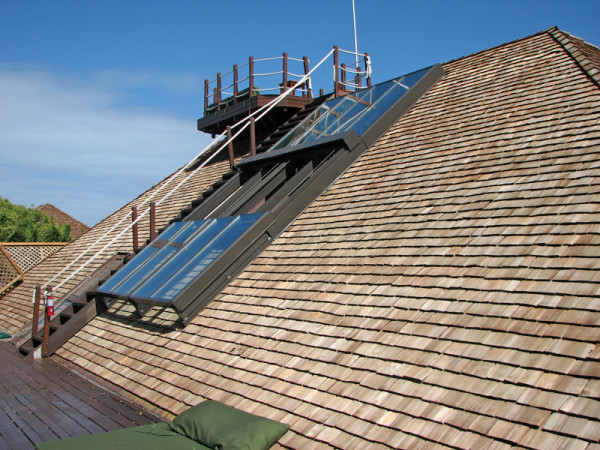
(Courtesy: Solar Innovations)
Many building codes now require ventilation for all skylights. Ridge and eaves vents are the traditional way to meet these requirements. You might consider newly designed retractable skylights. Available as single or multi-paned systems, the panels retract upward and stack atop one other. Don’t worry if it starts to rain: the skylight can be outfitted with rain sensors that detect moisture and automatically close. And if you want to “go green” and be eligible for a 30 percent Federal energy tax credit, consider solar-powered skylights: a solar panel captures daylight to charge a battery that opens and closes the skylight, avoiding any need for wiring and electricity. A screen to keep out insects and debris is a good idea for all vents; if you install a motorized unit, be careful operating it in winter, as the weight of snow and ice buildup can damage the motor.
Caulking, too, has improved; silicone weatherproofing sealants such as GE Silpruf or Dow 795 are used to provide long-lasting protection in a variety of weather conditions, without the deterioration and cracking associated with traditional caulks. If you want to completely enclose your unit, a protective skin such as Solar Innovations’ Flexible Glazing System can be applied to both existing and new skylights for a tighter, more waterproof seal. The protective glazing is screwed to the substrate, gaskets applied on both sides of the extrusion, the glass set with a pressure plate, and the unit sealed for a watertight fit.
Some of the new-tech skylights look remarkably like the old iron-framed roof lanterns. But innovative new products and applications have come to market: consider skylights glazed with monolithic laminated glass and an anti-slip frit pattern to allow walking on them. Typically placed on a balcony or the flat roof of a second-storey porch, they brighten an enclosed porch or sunroom underneath and are not readily visible from the street.
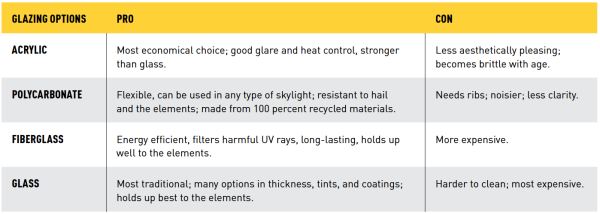
If you are adding a skylight visible from the street, choose a location that doesn’t alter the profile of your roofline and that is easily serviceable—near a window for access is best. If you choose a motorized unit, avoid keeping anything underneath you would not want to get wet, just in case the power goes out in a storm.
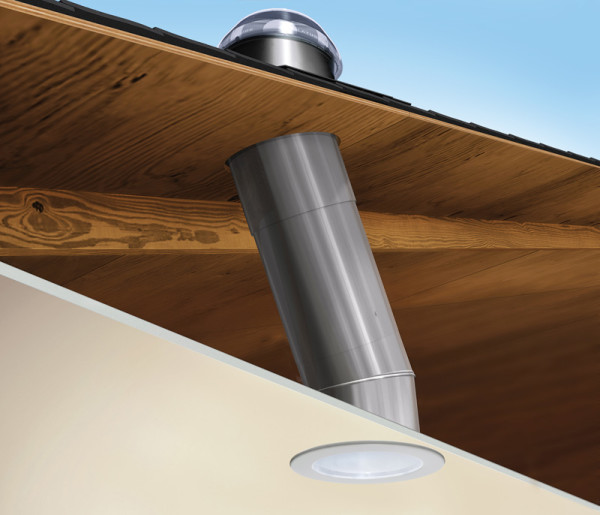
(Courtesy: Solatube)
Solar Tubes
Tubular skylights are also called TDDs, for tubular daylight devices. These are practical for hallways, closets, stairwells, bathrooms, and laundry rooms—areas with poor exterior access for a traditional window. Solar tubes capture light on the roof through a small dome, transferring it down a reflective tube through a diffuser in the ceiling. Easy to install, they typically require only four to six inches of clearance (depending whether insulation is blown or batts) and can be placed around plumbing, framing, and other obstructions. Drawbacks are that they can collect moisture, and the acrylic ceiling diffusers may not be as aesthetically pleasing, as they are similar in appearance to can lights.
Vintage Skylights
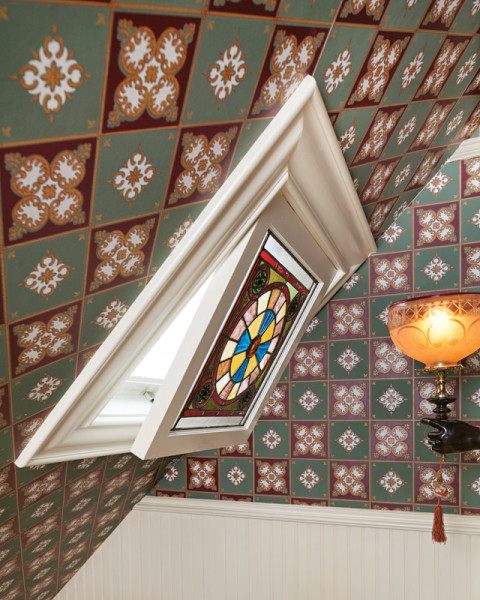
(Photo: William Wright)
Early skylights in, say, Federal buildings were typically just wood-framed window sash with muntins aligned to prevent pooling water and debris. It wasn’t until the late 19th century and the advent of metal fabrication shops that skylights became commonplace. By the 1890s one could order a skylight in copper, sheet metal, iron, or even aluminum. Architectural lantern roofs protected skylights on sloped roofs, while just about every style from domed, gabled, or pyramidal were available for skylights on flat roofs to better shed water and add architectural detail. Colored or stained glass was popular for Victorian skylights in entries and stairs.
If you have a vintage skylight, begin with a professional assessment, as the cost of restoration may exceed replacement. The most common problem is leaking. Water may back up if debris clogs weep holes, or the glass itself cracks; exposure to high winds and temperature extremes cause the seals and putty to crack and water to penetrate or condense, giving glass a cloudy appearance. Frames can be damaged or weakened by rot or corrosion.
Metal-cage and tempered-glass skylights (flat, gabled, pyramid, dome, etc). are still available, now better made, and may be fixed, retractable, or operable (manual or electric). Fabricators tend to call the old-fashioned raised skylights “roof lanterns,” because “skylight” is associated with those acrylic clamshells or bubbles.







